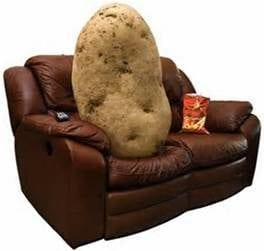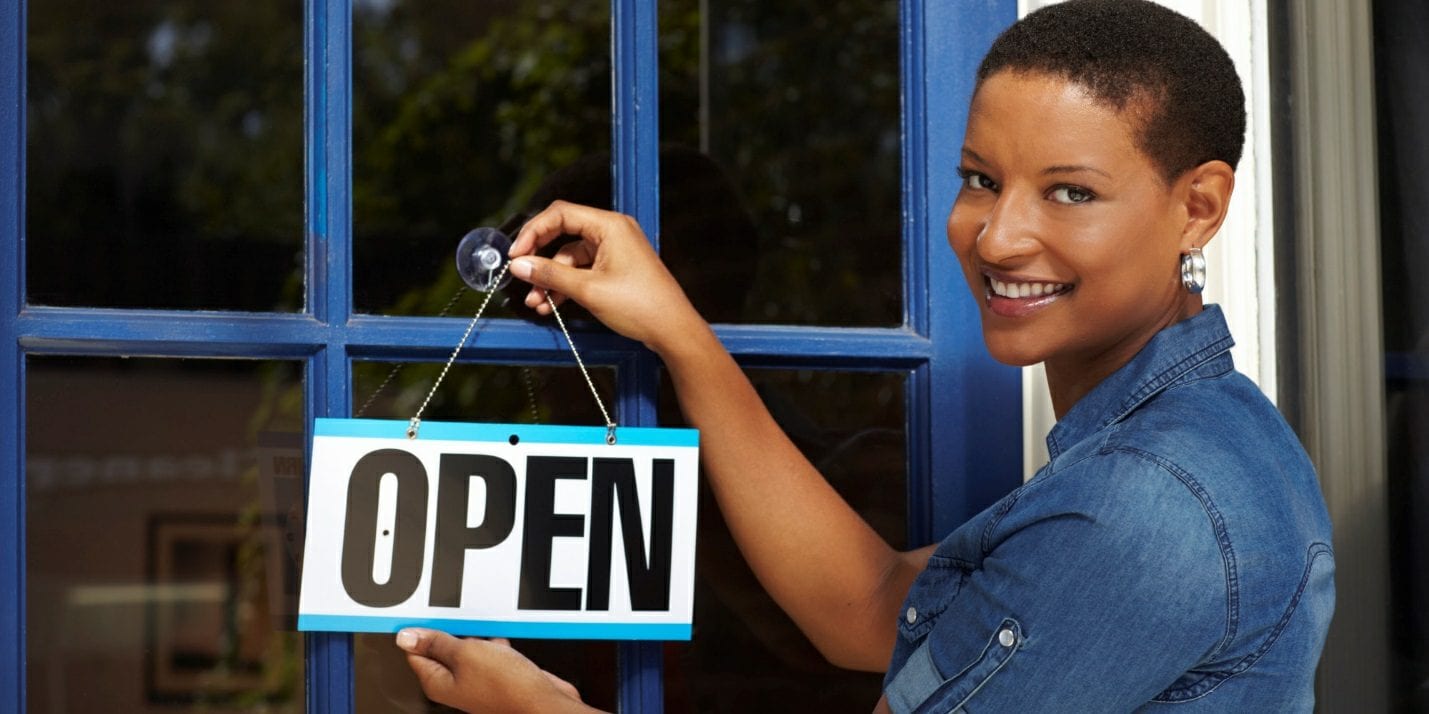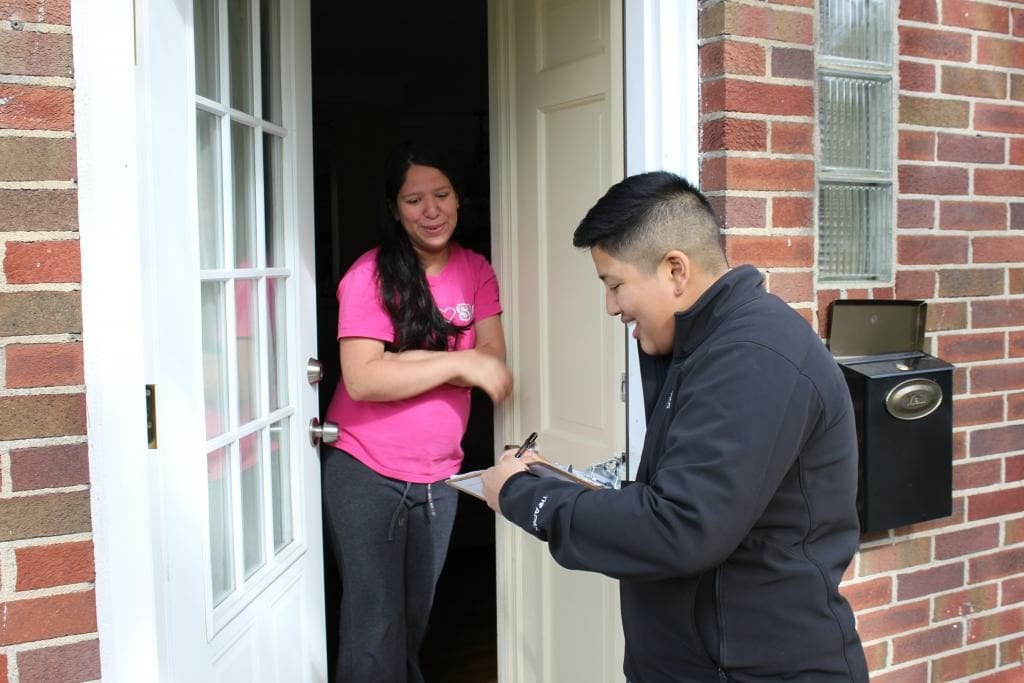by Florie Barnhoorn | Aug 28, 2017 | News
As the social assistance experiments in several Dutch municipalities will begin this fall, Studium Generale of Utrecht University has organized an event dedicated to ‘Free Money‘.
Studium Generale is a university’s public platform for knowledge sharing and reflection by organizing lectures, seminars and other activities aimed at students and the general public. Entrance is always free and accessible without reservation.
In the Netherlands, municipalities are responsible for the provision of tailor-made benefits to anyone who has insufficient means to support him or herself, and for achieving the purpose of the Participation Act, that is, making recipients independent from social assistance. Several municipalities are conducting two-year experiments, in the context of which they have the option of implementing social assistance regulations in an alternative way.
Each experiment will include at least three treatment groups, who are subjected to various regimes, and a control group. The restrictiveness of obligations between the groups will vary, from a group which has fewer obligations imposed on it to a group which is even more intensively supervised. In addition, participants in a third treatment group may retain a limited amount of their income from work on top of their payments. See the links at the bottom of this article for more details.
Researchers of Utrecht University, one of the four universities that will supervise the experiments scientifically, have been critical about the design of the pilots because of its limited scope and complicated nature.
The experiments, as they are proposed now, raise a number of questions, such as: why don’t we all give a basic income? Is it too expensive, or are there any other objections?
Rutger Bregman (The Correspondent) and Professor Ingrid Robeyns (political philosopher and economist at Utrecht University) will address these issues during the “Free Money” event on October 25, 2017.
Rutger Bregman has written several books on ‘Free Money’ — for instance, Utopia for Realists — and was one of the speakers at TED2017 in Vancouver last April.
Ingrid Robeyns holds the chair in Ethics of Institutions. In her teaching she focuses on normative and applied ethics and (normative) political philosophy. She has been teaching about justice theories and economic ethics at the masters level in recent years. In her own research, Robeyns addresses a number of normative issues related to demography, gender, family, and institutional economy. Robeyns writes for the English-language group blog Crooked Timber and occasionally on her own site Buiten Categorie. She will also be one of the speakers during BIEN’s 17th Congress next September in Portugal.
The event will take place on October 25, 2017. The language is Dutch. Those interested are invited to join the discussion on Facebook event. For more details, see here.
Previous information on social assistance experiments in The Netherlands:
Florie Barnhoorn, “The Netherlands: Amsterdam on collision course over social assistance experiments” (August 5, 2017).
Florie Barnhoorn, “The Netherlands: All that’s left is the action. Where do we stand with the experiments?” (June 2, 2017).
Kate McFarland, “The Netherlands: Social Assistance Experiments Under Review” (May 9, 2017).
Florie Barnhoorn, “The Netherlands: Design of BI Experiments Proposed” (October 26, 2016).
Credit Picture Flickr.com CC Ealasaid.
Thanks to Kate McFarland for reviewing this article.
by Dave Clegg | Aug 21, 2017 | Research

This paper represents a massive undertaking by both University of Melbourne Australia faculty and an independent agency called the the Brotherhood of St. Laurence dedicated to social Justice. It looks at a collection of BI pilot projects, as well as other projects which can be considered close approximations of a BI, from around the world. Government projects which have been run in the past as well as private and government projects currently being implemented.
The paper provides a number of graphs and and analyses aimed at comparing and contrasting the examined projects while underlining the incredible number of variables affecting both the design and the outcome of any such project that must be attended to. But the main focus of this paper is to determine how a BI can ensure equity of income, improved efficiency of governance and an end to the stigma of social supports.
While considering the concept of a BI to be attractive for a host of reasons, not the least of which are equity and the automation of the workplace, the paper is decidedly cautious and suggests careful consideration of “… broader issues and the intersecting domains and policies” which one can only assume refers to the social and economic ramifications of such a project. A very bureaucratic summation of some extremely crucial social concerns.

by Jason Burke Murphy | Aug 16, 2017 | Opinion
I hardly ever respond to anything in writing if I am not remembering it at least a year or so later. The piece I am remembering is an episode of the podcast Freakonomics called “Is The World Ready for A Guaranteed Basic Income?” I recommend it as an introduction.
I am going to give you a quote and then I want you to keep reading.
Sam Altman runs Y Combinator, a technology venture capitalist firm that has had some great successes and is now interested in funding social science research that will include basic income. Here is the quote, which came up during his interview in this podcast episode:
Maybe 90 percent of people will go smoke pot and play video games. But if 10 percent of the people go create new products and services and new wealth, that’s still a huge net win.

We are back to the couch potato. This character appears in a lot of objections to basic income. Altman concedes that there will be couch potatoes. He just thinks that is a good price to pay to get more entrepreneurs, even only a few of them. I appealed earlier for the reader to keep going because most people in my orbit would not like this quote. (If it sounds good to you, then I guess I should still urge you to keep reading.) I will explain why some will push back and why I ultimately do not.
We are starting to see increased support for as well as new sorts of negative reactions to the idea. Not very long ago, basic income advocates were often introducing the idea to specific audiences. This meant one could get away with starting where you thought the listener would react best. If you were talking to someone on the left, you might call it a “strike fund for all”. If someone is more liberal, you would emphasize that a basic income reaches people that welfare is supposed to help. With libertarian types, you start with the efficiency and non-bureaucratic character of a basic income. I have been very impressed by recent writing that emphasizes basic income’s ability to remedy asset inequality for people of color and women.
Now, I am very pleased to see more people who have already heard about basic income from someone. Sometimes they caught the wrong person for them. As we explain basic income, we will need to separate the policy (giving everyone an unconditional cash grant) from the project (which can range from left to right).
A quote like Altman’s can swing a listener in different directions. I know this from my social media work. I imagine people running different movies in their head. Some hear “new products and services and new wealth” and visualize start-ups and think it all sounds great. Others try to imagine a world working well with 90 percent of people not doing anything anyone else wants them to do and they just can’t see that working out well. Others hear this and worry that basic income is part of a larger scheme to organize our lives around Silicon Valley capitalists. To them, Altman seems to overly glorify the tech entrepreneur. Other writers are more desperate in labeling basic income a “neo-liberal plot”, which would make you laugh if you went to one of our Congresses. We would not want to merely swap one set of capitalists for another.
I have not met Sam Altman. His other statements show that he also finds basic income interesting because it directly answers a moral mandate to make sure people are clothed, fed, and sheltered. I highly recommend the rest of the podcast. My objective here is to explain why I think we ought to look at this quote charitably. I will show in what way I think his quote is true. I also want to propose an alteration that makes it much more palatable for those I see reacting negatively.
No One is Saying Ninety Percent of Society Will Hit the Couch
Altman is not talking about a whole society in which only 10 percent work. He is saying that even if we lose some work-time to lame leisure (pot and video games), we will make it back even if only 10 percent start up new enterprises. Nor is he saying that he knows that we will get one successful start-up for every nine lives lost to the coach. He is only saying that losing nine to the couch would be an acceptable price to pay if we gain a start-up, which would offer something someone wants and would also be offering jobs. This is very plausible.
Most people with a basic income will live a lot like they do now. They will have a more stable income. They will worry less about many of their friends and family. They will have a plan if they need to train for a job or pay bills between jobs. This cuts into the number of people who would choose the couch. Work can be a place where we get recognized for our talents and for our cooperativeness. And jobs pay money. In fact, you can still count on a basic income if you take on a job. And you can count on it if you change your mind.

The problem now is that employees have very few options when workplaces go sour. Basic income creates one option (work for no one) and enables people to survive while they search for and train for other options. This will increase pressure on workplaces to improve.
I used to be suspicious of most rhetoric surrounding markets. I think that was because so much of it ended up with a conclusion like “Therefore, government should do less/nothing.” I have come to value markets more and more. Now, I want them for everyone. A basic income secures the capability to participate in markets for everyone. There are many sections of the United States that get very little government or market attention. That would be less likely with a basic income in effect. You will also see more start-ups under a UBI because failing doesn’t risk losing everything. Most entrepreneurs now come from the upper one percent of our society. Whole communities aren’t going to see much startup soon if we wait for the elite to try to make money there.
Add Caregivers and Organizers To The Mix
Someone organizing a non-profit, a political organization, or even an informal social scheme fits under Sam Altman’s phrase of “new products and services and new wealth.” He is not confining his hopes to technological startups.
Robert Putnam’s book Bowling Alone, written in 2000, lays out the loss of social networks and the harm that has caused most Americans. These can be voluntary associations, political clubs, fraternal organizations, or sports leagues. Participation has declined as work-hours per household has increased. This means that many will look for alternative ways to interact with like minded Americans, especially when it comes to sporting events.
There is a strong link between organizational affiliation and many different metrics for happiness or meaningfulness. We also see more affiliation in communities that have more political power and that generate more market activity. (There is likely a causal loop there. Lack of power and lack of market options may often precede losses in organizational depth. And a lack of organizational depth may well often precede losses in money and power.) Social-capital comes hand in hand with capital-capital.

Michael Lewis and Eri Noguchi apply Putnam’s work, and combine it with survey data, to give us strong reasons to think that we would see improvements in civic networks as well. Declines in civic participations can be shown to coincide with an increase in work hours. People who value civic participation will have an option to do so.
If you want to know how a basic income will benefit society, let’s make it clear that we are including “organizers” within our understanding of “entrepreneur”. Our culture is one that has to be reminded of this. Once we expand our understanding, we can look around and see how many people are trying to participate in institutions that organize in pursuit of truth, justice, and beauty.
Examples will help here: church committees, symphony boards, rotary clubs, sports leagues, poetry circles, craft guilds, environmental organizations, identity-based youth groups, identity-based cultural organizations, music bands, theater companies, unions, political organizations, lobbying organizations, etc. This list could go on a very long time.
At this point, I want to share a little bit of what I learned as a community organizer in Arkansas for ACORN. Organizing is difficult. There are many ways in which it is not like entrepreneurship at all. You aren’t selling anything. All organizations have trouble finding this skill set. It is also difficult to get the resources together for full-time organizing. We would often hire someone who loved the mission of the organization but had to leave for pretty small increases in money. It might also prevent the loss of organizers to the for-profit sector.

Please note: I have noticed that a large section of the US internet is trying to malign the very term “community organizer” but my argument includes organization of groups I disagree with.
The ratio of organizers to members goes beyond the one to nine ratio that Altman imagines. About six of us at Arkansas ACORN served around 5,000 households if you are only counting dues payers. The community that responded to our work was larger than that. There were meetings every month. People debated goals and tactics. Political leaders were interviewed or protested. Organizations that despised us did the same things, though often with more funding from fewer people.

Every time I hear the term “couch potato” brought up as some sort of nightmare case for basic income, I remember that I sat on thousands of couches, urging people to get active, to get involved with their community’s decisions. I know that with a basic income, we would have had more organizers and more active members. Rival organizations would have had the same benefit. We will live in a more democratic place.
I am still involved in political work, even though I am not employed to do it. I also have been published as a poet and as a photographer, though not paid. You will find a lot of people working on magazines, readings, and websites in which the true, the good, and the beautiful are debated. A lot of people can see how to raise some money doing cultural, social, or political work but they can’t get to a decent level. A basic income would generate audiences for artists, philosophers, preachers-good and bad. A thriving art world is full of disputed art. A thriving philosophical culture will have disputed philosophical projects. We will live in a more interesting place.

Norman Rockwell “Freedom of Speech”
Finally, we should look at the decision to care for a family like we would a “start-up”. The “caregiver” has started a “career” that works for many people like a vocation. For each caregiver, there is at least one other person, usually more, benefiting in a meaningful way. Economists often do not count care for children and elders unless someone is formally paid to do it. A basic income would enable people to say no to employment if someone they love needs them. We will live in a more caring place.
In fact, Robert Putnam shows us in his research, as do Michael Lewis and Eri Noguchi in theirs, that the “stay-at-home” mom was often a civic association organizer as well.
More markets, more culture, more democracy, more care. This looks to be well worth investing 3% of our GDP and letting a few people stay home.
When I read the comments and notes that come with all basic income articles, I can see that some people would worry about people not working because of basic income. Basic Income enables people not to work. Kate McFarland points out that a basic income enables people to say no to all social useful activity. But we are far away from that. Some people will live incorrectly. Many people live incorrectly now. Basic income is a good bet for increasing socially useful work.
- More entrepreneurs means more people are offered employment.
- More organizers mean more people are being invited to venues where what is true, what is good, and what is beautiful are debated and plans are made.
- More caregivers mean more people are taken care of.
Therefore, most likely, for every couch potato, we will have better reasons than ever to get off the couch.
About the author:
Jason Burke Murphy teaches philosophy and ethics at Elms College in Western Massachusetts. He serves on the board of US Basic Income Guarantee Network and recently presented at their North American Congress. He helps with social media for US Basic Income Guarantee Network. He has written before for Basic Income News. His most read piece so far is “Basic Income as Proposal, as Project, and as Idea.”

by Kate McFarland | Aug 10, 2017 | News
Launched in February 2017, the Basic Income Lab (BIL) at Stanford University’s McCoy Family Center for Ethics and Society aspires to provide information and advice to researchers, policy makers, and other individuals and groups engaged in the design and implementation of basic income experiments or policies.
Already this year, BIL has held a panel discussion on basic income experiments, in which Joe Huston described the large-scale experiment to be conducted in Kenya by the New York based non-profit GiveDirectly, Elizabeth Rhodes discussed the plans to Silicon Valley’s Y Combinator to run a basic income experiment in the United States, and Guy Standing reviewed the results of a pilot study in eight villages of the Indian state of Madhya Pradesh. It also hosted a presentation by Philippe Van Parijs of his new comprehensive book on basic income, Basic Income: A Radical Proposal for a Free Society and a Sane Economy (with Yannick Vanderborght). Now, BIL is preparing for both public and private events to be held throughout the upcoming academic year.
In September, BIL will co-host the Cities and Universal Basic Income Workshop, working aside the Economic Security Project (ESP), the McCoy Family Center, and the National League of Cities, which recommended investigation of city-level basic income programs in its 2016 report The Future of Work in Cities. This private event aims to inform city leaders and other researchers about the latest developments regarding current and planned basic income experiments, and to investigate the possibility of implementing municipal-level basic income policies. Additionally, BIL has scheduled two co-sponsored public lectures on the relationship of basic income to issues of gender and race: in October, Almaz Zelleke (NYU Shanghai) will visit Stanford to speak about how basic income can impact gender justice; then, in January, Dorian T. Warren (Roosevelt Institute, ESP) will speak about basic income in relation to racial justice.

Juliana Bidadanure in audience at BIL panel
BIL is led by Faculty Director Juliana Bidadanure, a philosophy professor who last year designed and taught a graduate seminar on basic income. Describing the mission of the lab, she states, “There is an increasing need for in-depth academic research on various policy designs for UBI and how to evaluate its implementation – assessing the visions that underpin unconditional cash, the political and economic feasibility of various proposals, as well as its strengths and weaknesses as a measure to alleviate poverty and inequality.”
In addition to her work with BIL, Bidadanure is preparing to teach an undergraduate course on basic income during Stanford’s winter term.
To stay abreast of BIL’s activities, subscribe to its mailing list and follow BIL on Facebook.
Reviewed by Dawn Howard and Juliana Bidadanure
Photos from the Basic Income Lab’s “Experiments in Unconditional Basic Income” panel; credit: Christine Baker (at EthicsSoc).

by Kate McFarland | Aug 9, 2017 | News
On Thursday, August 10, the US progressive conference Netroots Nation will host a panel discussion titled “A Progressive Vision of Universal Basic Income.”
The session will examine what type of basic income might “lift up those who are struggling, both today and going forward into the future,” and what implementations of the idea might “leave many worse off than they are today.”
Sandhya Anantharaman of the Universal Income Project will moderate a panel consisting of Joe Dinkin (National Communications Director for Working Families), Reetu Mody (Policy Associate at Presente.org), Tom Perriello (President of the Center for American Progress Action Fund), and Saket Soni (Executive Director of the New Orleans Workersʹ Center for Racial Justice).
Details about the “Progressive Vision of Universal Basic Income” panel, along with biographies of some the panelists, are available on the conference website.
First convened in 2006, Netroots Nation is an annual conference for progressive activists organized by the left-wing political blog Daily Kos. According to its website, the conference is the “largest annual conference for progressives,” attracting nearly 3000 attendees from the US and beyond.
This year, Netroots Nation will take place from August 10-13 at the Hyatt Regency Atlanta in Atlanta, Georgia. Wikipedia describes the 2017 conference as “the most diverse event to date, with 69 percent of selected speakers and moderators being people of color.” The event is registration only, with adult ticket prices beginning at $395 USD. A complete schedule of activities, which include keynote talks, breakout sessions, and activist training workshops, is viewable on Netroots Nation’s website.
Netroots Nation will also be livestreaming the conference on its Facebook page.
Reviewed by Russell Ingram
Photo: “Looking Up” CC BY 2.0 Lee Coursey (interior view of Hyatt Regency Atlanta)












